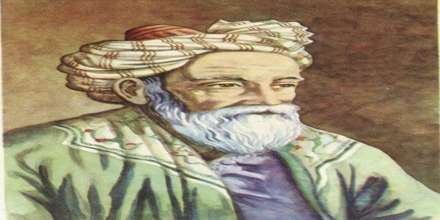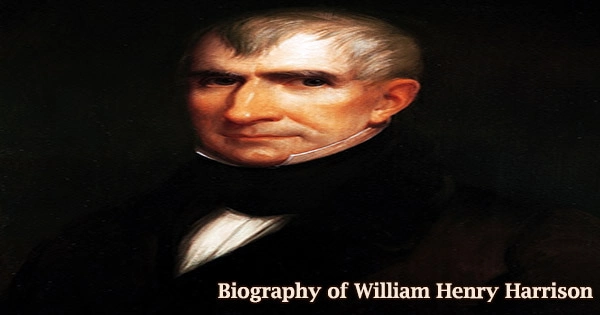Omar Khayyam – Mathematician, Astronomer, and Poet, (1048-1131)
Name: Omar Khayyam
Date of Birth: 18 May 1048
Place of Birth: Nishapur, Khorasan, Persia (Iran)
Date of Death: 4 December 1131 (aged 83)
Place of Death: Nishapur, Khorasan, Persia (Iran)
Nationality: Persian
School: Islamic mathematics, Persian poetry, Persian philosophy
Main interests: Mathematics, Astronomy, Philosophy, Poetry
Early Life
Omar Khayyam, Arabic in full Ghiyāth al-Dīn Abū al-Fatḥ ʿUmar ibn Ibrāhīm al-Nīsābūrī al-Khayyāmī was born on May 18, 1048, in Neyshābūr (also spelled Nīshāpūr), Khorāsān (now Iran). He was a Persian mathematician, astronomer, and poet, renowned in his own country and time for his scientific achievements but chiefly known to English-speaking readers through the translation of a collection of his robāʿīyāt (“quatrains”) in The Rubáiyát of Omar Khayyám (1859), by the English writer Edward FitzGerald.
Born in Nishapur, in northeastern Persia, at a young age he moved to Samarkand and obtained his education there. Afterwards he moved to Bukhara and became established as one of the major mathematicians and astronomers of the Islamic Golden Age. He wrote one of the most important treatises on algebra written before modern times, the Treatise on Demonstration of Problems of Algebra (1070), which includes a geometric method for solving cubic equations by intersecting a hyperbola with a circle. He contributed to a calendar reform.
In Samarkand he made contact with his father’s old friend Abu Tahir, who was governor and chief judge of the city. Tahir, observing Khayyam’s extraordinary talent with numbers, gave him a job in his office. Soon Khayyam was given a job in the king’s treasury.
While living in Samarkand, Khayyam made a major advance in algebra.
His significance as a philosopher and teacher, and his few remaining philosophical works, have not received the same attention as his scientific and poetic writings. Al-Zamakhshari referred to him as “the philosopher of the world”. He taught the philosophy of Avicenna for decades in Nishapur.
Outside Iran and Persian-speaking countries, Khayyám has influenced literature and societies through the translation of his works and popularization by other scholars. The greatest such effect was in English-speaking countries. The English scholar Thomas Hyde (1636–1703) was the first non-Persian known to have studied his works. The most influential, however, was Edward FitzGerald (1809–83), who made Khayyám famous in the West through his translation and adaptations of Khayyám’s quatrains (Persian: رباعیات rubāʿiyāt) in the Rubaiyat of Omar Khayyam.
Khayyám died in 1131, and is buried in the Khayyám Garden in Nishapur. The reconstruction of the tombs of Persian icons like Hafez, Saadi, Attar, Pour Sina and others were built by Reza Shah and in 1963, the Mausoleum of Omar Khayyám was reconstructed on the site by Hooshang Seyhoun.
In the year 1072 AD, Omar Khayyam documented the most accurate year length ever calculated – a figure still accurate enough for most purposes in the modern world. Khayyam was an astronomer, astrologer, physician, philosopher, and mathematician: he made outstanding contributions in algebra. His poetry is better known in the West than any other non-Western poet.
The man himself remains something of an enigma. Different biographers have documented him as a fun-loving, wine-drinking agnostic; a closet Zoroastrian; a Sufi Muslim; an orthodox Sunni Moslem; and a follower of Ancient Greek philosophy. All agree that he was an outstanding intellectual.
- غیاث الدین Ghiyāth ad-Din – means “the Shoulder of the Faith” and implies the knowledge of the Quran.
- ابوالفتح عمر بن ابراهیم Abu Fat’h ‘Umar bin Ibrahim – Abu means father, Fat’h means conqueror, ‘Umar means life, bin means son of, Ibrahim is his father’s name.
- خیام Khayyām – means “tent maker”, a byname from the father’s craft.
- نیشابورﻯ Nīshāpūrī means “of Nishapur”.
Educational Career
He spent part of his childhood in the town of Balkh (in present-day northern Afghanistan), studying under the scholar Sheikh Muhammad Mansuri. He later studied under Imam Mowaffaq Nishapuri, one of the greatest teachers of the Khorasan region. Throughout his life, Omar Khayyám taught algebra and geometry during the day, and in the evening attended the Seljuq court as an adviser of Malik-Shah I. At night he studied astronomy and worked on the Jalali calendar.
Khayyám’s years in Isfahan were productive, but after the death of the Seljuq Sultan Malik-Shah I (presumably by the Assassins’ sect), the Sultan’s widow turned against him as an adviser, and as a result, he soon set out on his Hajj or pilgrimage to Mecca and Medina. He was then allowed to work as a court astrologer, and to return to Nishapur.
Personal Life
Omar Khayyam was born on May 18, 1048 in the great trading city of Nishapur in northern Persia. Today the city is in Iran. Omar’s father was Ebrahim Khayyami, a wealthy physician. Omar’s mother’s name is not known. He was born into a family of tent-makers (Khayyám), and on this name later in life:
Khayyám, who stitched the tents of science,
Has fallen in grief’s furnace and been suddenly burned,
The shears of Fate have cut the tent ropes of his life,
And the broker of Hope has sold him for nothing!
— Omar Khayyám
Some authors have written that Omar’s father earned a living making tents, because Khayyami means tent-maker.
Omar’s family were Muslims. His father seems to have been relaxed about religion, employing a mathematician by the name of Bahmanyar bin Marzban, a devotee of the ancient Persian religion of Zoroastrianism, to tutor Omar. Bahmanyar had been a student of the great physician, scientist, and philosopher Avicenna, and he gave Omar a thorough education in science, philosophy, and mathematics. Khawjah al-Anbari taught Omar astronomy, guiding him through Ptolemy’s Almagest.
In his early teens Omar worked in his fathers’ surgery learning about medicine.
In 1066 Halley’s comet appeared in the heavens, William the Conqueror’s Norman Army invaded England, and Omar’s father Ebrahim died. A few months after Ebrahim’s death, Omar’s tutor Bahmanyar also died.
He is believed to have married and had at least one son and one daughter.
In 1092, Malik Shah and his vizier both died – the first probably by poisoning, the second by assassination. Khayyam went into hiding during the resulting power struggle. His survival depended on lying low. He had been Malik Shah’s personal physician and become his close personal friend – which had made him enemies – and Khayyam’s poetry suggests his behavior may not have been devoutly religious – and this had also made him enemies. Khayyam actually published no poetry in his lifetime. Some of his musings would potentially have endangered his life.
Career
Khayyám was famous during his life as a mathematician. At the age of 22, in 1070, Khayyam published one of his greatest works: Treatise on Demonstration of Problems of Algebra and Balancing. In it he showed that a cubic equation can have more than one solution. He also showed how the intersections of conic sections such as parabolas and circles can be utilized to yield geometric solutions of cubic equations. Archimedes had actually started work in this field over a thousand years earlier, when he considered the specific problem of finding the ratio of the volume of one part of a sphere to another. Khayyam considered the problem in a more general, methodical way.
Khayyám wrote Explanations of the difficulties in the postulates in Euclid’s Elements. The book consists of several sections on the parallel postulate (Book 1), on the Euclidean definition of ratios and the Anthyphairetic ratio (modern continued fractions) (Book 2), and on the multiplication of ratios (Book 3).
Although Khayyam’s achievement was magnificent, he was personally disappointed that he needed to utilize geometry to solve cubic equations – he had hoped to discover an algorithm using only algebra.
Following Khayyam’s work there was little significant progress on cubic equations until, in 1535, Niccolo Tartaglia found general solutions for all cubic equations.
Khayyam’s algebra was not the system of letters and signs we use today. His algebra was expressed in words. So, where today we write:
Solve for x: x2 + 6 = 5x
Khayyam wrote: What is the amount of a square so that when 6 dirhams are added to it, it becomes equal to five roots of that square?
His solution is not a direct path to a numerical solution, and his solutions are not numbers but line segments. Khayyám’s work can be considered the first systematic study and the first exact method of solving cubic equations.
In an untitled writing on cubic equations by Khayyám discovered in the 20th century, where the above quote appears, Khayyám works on problems of geometric algebra. First is the problem of “finding a point on a quadrant of a circle such that when a normal is dropped from the point to one of the bounding radii, the ratio of the normal’s length to that of the radius equals the ratio of the segments determined by the foot of the normal.” Again in solving this problem, he reduces it to another geometric problem: “find a right triangle having the property that the hypotenuse equals the sum of one leg (i.e. side) plus the altitude on the hypotenuse “.
Regarding more general equations he states that the solution of cubic equations requires the use of conic sections and that it cannot be solved by ruler and compass methods. A proof of this impossibility was only plausible 750 years after Khayyám died. In this paper Khayyám mentions his will to prepare a paper giving full solution to cubic equations: “If the opportunity arises and I can succeed, I shall give all these fourteen forms with all their branches and cases, and how to distinguish whatever is possible or impossible so that a paper, containing elements which are greatly useful in this art, will be prepared.”
This refers to the book Treatise on Demonstrations of Problems of Algebra (1070), which laid down the principles of algebra, part of the body of Persian mathematics that was eventually transmitted to Europe.
In 1073, Khayyam received an invitation to the Persian city of Isfahan, capital of the Seljuk Empire, to prepare a calendar that would work in an orderly way and be accurate forever – this was an era in which year lengths were regularly changed.
Khayyam’s invitation came from the two most powerful men in the Seljuk Empire, of which Persia was part: these were Malik Shah, Sultan of the Great Seljuq Empire, and Nizam al-Mulk, his vizier, to build an observatory.
According to some accounts, the version of the medieval Iranian calendar in which 2,820 solar years together contain 1,029,983 days (or 683 leap years, for an average year length of 365.24219858156 days) was based on the measurements of Khayyám and his colleagues. Another proposal is that Khayyám’s calendar simply contained eight leap days every thirty-three years (for a year length of 365.2424 days). In either case, his calendar was more accurate to the mean tropical year than the Gregorian calendar of 500 years later. The modern Iranian calendar is based on his calculations.
Today we know that the length of a tropical year actually changes by as much as 30 minutes from year to year. The average tropical year length quoted today is 365.242189 days, which to seven significant figures is 365.2422 days – exactly the figure Khayyam arrived at almost a thousand years ago. The length of a tropical year is also increasing very slightly as time passes, although not enough between Khayyam’s era and our own to be noticeable on a scale of seven significant figures.
Malik Shah introduced Khayyam’s new calendar in the Seljuk Empire on March 15, 1079. It was used until the 20th century.
Some Arabic and Persian scholars report that Omar khayyam in his twenties met famous Ismaili missionary Hassan-i Sabbah who took him to Alamut castle where he tried to offer position to Omar as one of his scholars. Realizing that Omar has clearly has no intention of taking the position, he tried to assassinate him using his fedayeen but failed. After which the reigning sultan ordered manhunt of the so called “infidels of Islam”.
Khayyám himself rejected any association with the title falsafī “philosopher” in the sense of Aristotelianism and stressed he wishes “to know who I am”. In the context of philosophers he was labeled by some of his contemporaries as “detached from divine blessings”.
As a mathematician, Khayyám has made fundamental contributions to the philosophy of mathematics especially in the context of Persian Mathematics and Persian philosophy with which most of the other Persian scientists and philosophers such as Avicenna, Abū Rayḥān al-Bīrūnī and Tusi are associated. There are at least three basic mathematical ideas of strong philosophical dimensions that can be associated with Khayyám.
- Mathematical order: From where does this order issue, and why does it correspond to the world of nature? His answer is in one of his philosophical “treatises on being”. Khayyám’s answer is that “the Divine Origin of all existence not only emanates wujud “being”, by virtue of which all things gain reality, but It is the source of order that is inseparable from the very act of existence.”
- The significance of axioms in geometry and the necessity for the mathematician to rely upon philosophy and hence the importance of the relation of any particular science to prime philosophy. This is the philosophical background to Khayyám’s total rejection of any attempt to “prove” the parallel postulate, and in turn his refusal to bring motion into the attempt to prove this postulate, as had Ibn al-Haytham, because Khayyám associated motion with the world of matter, and wanted to keep it away from the purely intelligible and immaterial world of geometry.
- Clear distinction made by Khayyám, on the basis of the work of earlier Persian philosophers such as Avicenna, between natural bodies and mathematical bodies. The first is defined as a body that is in the category of substance and that stands by itself, and hence a subject of natural sciences, while the second, called “volume”, is of the category of accidents (attributes) that do not subsist by themselves in the external world and hence is the concern of mathematics. Khayyám was very careful to respect the boundaries of each discipline, and criticized Ibn al-Haytham in his proof of the parallel postulate precisely because he had broken this rule and had brought a subject belonging to natural philosophy, that is, motion, which belongs to natural bodies, into the domain of geometry, which deals with mathematical bodies.
Khayyam’s poetry was popularized in the 1800s by Edward FitzGerald’s translations in the Rubaiyat of Omar Khayyam. Khayyam became so admired in the West that in 1963 the Shah of Iran had his grave exhumed and Khayyam’s remains moved to a huge purpose-built mausoleum in Nishapur where tourists could pay homage to the great poet.
Scholars believe he wrote about a thousand four-line verses or rubaiyat. He was introduced to the English-speaking world through the Rubáiyát of Omar Khayyám, which are poetic, rather than literal, translations by Edward FitzGerald (1809–1883). Other English translations of parts of the rubáiyát (rubáiyát meaning “quatrains”) exist, but FitzGerald’s are the most well known.
Ironically, FitzGerald’s translations reintroduced Khayyám to Iranians “who had long ignored the Neishapouri poet”. A 1934 book by one of Iran’s most prominent writers, Sadeq Hedayat, Songs of Khayyám (Taranehha-ye Khayyám), is said to have “shaped the way a generation of Iranians viewed” the poet.
Omar Khayyám’s poems have been translated into many languages. Many translations were made directly from Persian, more literal than the translation by Edward Fitzgerald.


There have been widely divergent views on Khayyám. At one end of the spectrum, there are nightclubs named after Khayyám, and he is seen as an agnostic hedonist. On the other end of the spectrum, he is seen as a mystical Sufi Muslim poet with a complex set of ideals.
FitzGerald, in his preface to the Rubáiyát, also contested claims that Khayyám was a Sufi mystic:
“Omar’s Epicurean Audacity of thought and Speech caused him to be regarded askance in his own time and country. He is said to have been especially hated and dreaded by the Sufis, whose practice he ridiculed, and whose faith amounts to little more than his own, when stripped of the Mysticism and formal recognition of Islamism under which Omar would not hide.”
Omar Khayyam revered Prophet Muhammad as demonstrated by his writings. In his book entitled on the elaboration of the problems concerning the book of Euclid he refers to the Prophet Muhammad as “master of prophets.” In the same book, Khayyam at the end of it affirms what he stated and praises God and Prophet Muhammad. In his piece entitled On Existence Khayyam refers to Prophet Muhammad as his master. In his Quatrains, Khayyam asks Prophet Muhammad to admit him into heaven.
Abdullah Dougan, a modern Naqshbandi Sufi, provides commentary on the role and contribution of Omar Khayyam to Sufi thought. Dougan says that while Omar is a minor Sufi teacher compared to the giants – Rumi, Attar and Sana’i – one aspect that makes Omar’s work so relevant and accessible is its very human scale as we can feel for him and understand his approach. The argument over the quality of Fitzgerald’s translation of the Rubaiyat has, according to Dougan, diverted attention from a fuller understanding of the deeply esoteric message contained in Omar’s actual material – “Every line of the Rubaiyat has more meaning than almost anything you could read in Sufi literature”.
Death
Omar Khayyam died at the age of 83 in his hometown of Nishapur on December 4, 1131. He was buried in a tomb whose location he had chosen in an orchard where blossom would fall twice a year.
The reconstruction of the tombs of Persian icons like Hafez, Saadi, Attar, Pour Sina and others were built by Reza Shah and in 1963, the Mausoleum of Omar Khayyám was reconstructed on the site by Hooshang Seyhoun.
Honours
- A lunar crater Omar Khayyam was named after him in 1970 and a minor planet called 3095 Omarkhayyam, discovered by Soviet astronomer Lyudmila Zhuravlyova in 1980, is named after him.
- In June 2009 Iran donated a scholar pavilion to United Nations Office in Vienna which is placed in the central Memorial Plaza of the Vienna International Center. The Persian Scholars Pavilion at United Nations in Vienna, Austria is featuring the statues of four prominent Iranian figures. Highlighting the Iranian architectural features, the pavilion is adorned with Persian art forms and includes the statues of renowned Iranian scientists Avicenna, Abu Rayhan Biruni, Zakariya Razi (Rhazes) and Omar Khayyam.
- In March 2016, Khayyam’s statue was unveiled by in the courtyard of the university of Oklahoma as well. In addition, two other copies of the statue, one of which was installed in Khayyam’s hometown of Neyshabur, and the other is to be sent to Florence, Italy. The three statues were created by Iranian sculptor Hossein Fakhimi. The President of the University of Oklahoma David L. Boren, a former governor of Oklahoma and U.S. senator, also attended the ceremony. The ceremony was organized with the help of the International Society for Iranian Culture.
One of the founders of the Discordian religion, Omar Khayyam Ravenhurst named himself after the figure.
















